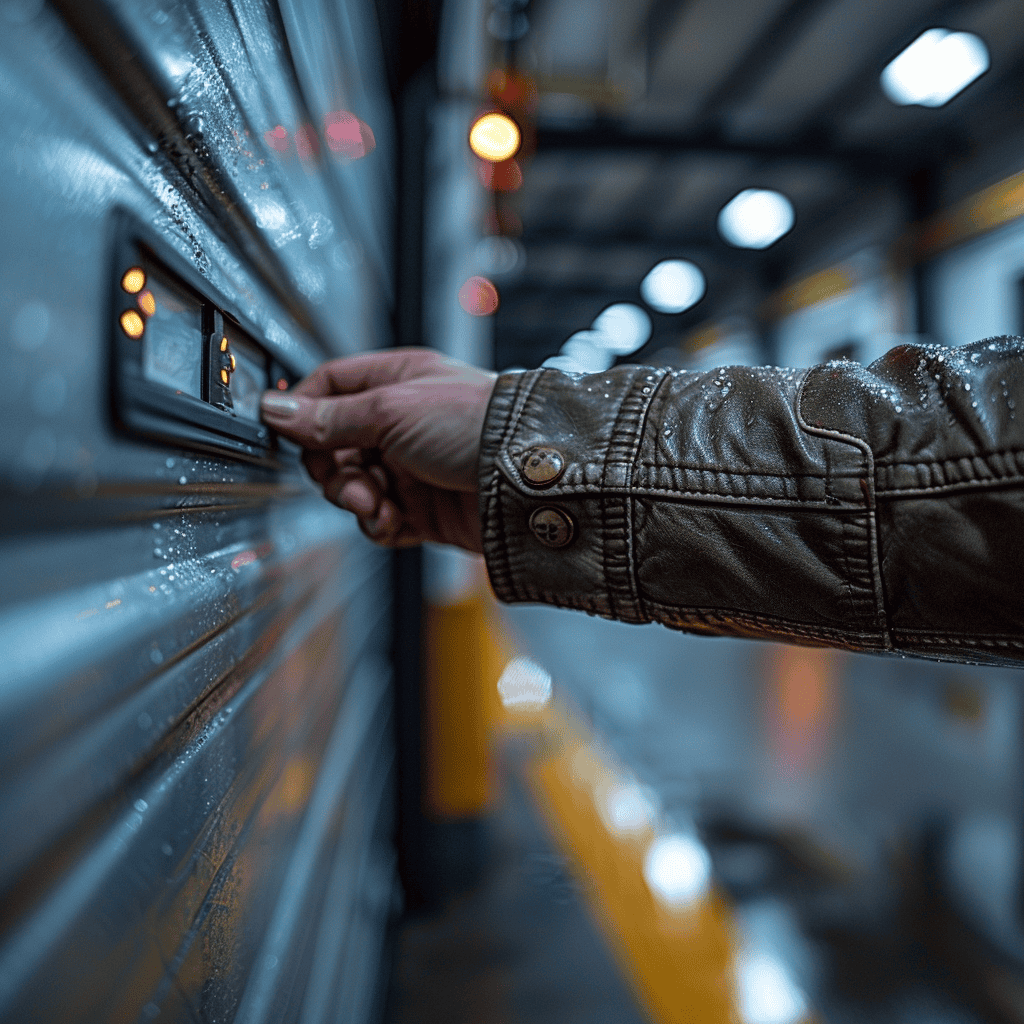Garage doors are essential components of our homes, offering convenience and security. However, they can become troublesome after a power outage. Knowing how to reset your garage door is crucial for restoring its functionality and ensuring safety. This article covers all you need to know about how to reset your garage door after a Power Outage, including types of openers, common problems, reset processes, safety precautions, and when to seek professional help.
Types of Garage Door Openers
Understanding the type of garage door opener you have can help in troubleshooting and resetting it correctly. Here are the main types:
Chain-Drive Openers
Chain-drive openers use a metal chain to lift and lower the door. They are known for their durability and affordability, but they can be quite noisy. These openers are suitable for detached garages where noise is less of a concern. The metal chain provides strong lifting capability, making these openers a good choice for heavy or oversized garage doors. However, the trade-off for their robustness is the noise they produce, which might be disruptive in residential areas or attached garages.

Belt-Drive Openers
Belt-drive openers use a rubber belt instead of a chain, resulting in much quieter operation. They are ideal for garages attached to the home or in residential areas where noise reduction is a priority. The rubber belt reduces vibrations and provides smooth, reliable operation. Additionally, these openers typically require less maintenance than chain-drive models because there are fewer metal parts that can wear out or need lubrication.
Screw-Drive Openers
Screw-drive openers operate with a threaded steel rod to move the door. They are less noisy than chain-drive openers and require minimal maintenance. These openers are particularly effective in extreme climates, as the simplicity of the mechanism allows for fewer parts that can expand or contract with temperature changes. Their straightforward design makes them suitable for various garage door sizes and types, providing reliable performance year-round.
Direct-Drive Openers
Direct-drive openers have only one moving part, which is the motor itself. This results in ultra-quiet operation and minimal maintenance requirements. The motor glides along a stationary chain, providing a smooth and reliable motion with fewer moving parts to wear out or require adjustment. These openers are known for their durability and often come with long warranties, making them a reliable choice for homeowners looking for a long-term solution.
Jackshaft Openers
Jackshaft openers are mounted on the wall beside the garage door, rather than on the ceiling. This design saves ceiling space and offers quiet and smooth operation. Jackshaft openers are particularly suitable for garages with high or obstructed ceilings, where traditional ceiling-mounted openers would be impractical. These openers also include advanced features such as automatic deadbolts for enhanced security and are compatible with home automation systems.
Ways to Reset Your Garage Door After a Power Outage and Common Problems
Power outages can cause several issues with your garage door. Here are some common problems:
Door Not Responding
After a power outage, the garage door might not respond to remote controls or wall switches. This could be due to disrupted power supply or settings. The power surge or loss might affect the opener’s circuitry, causing it to need a manual reset. Additionally, some models may require re-synchronization with remote controls or a recalibration of their operating parameters.

Lost Settings
Settings such as travel limits and force settings might be lost or reset during a power outage, affecting the door’s operation. These settings determine how far the door travels when opening or closing and the amount of force it uses. If these are reset, the door might not close completely or might exert too much force, leading to potential damage or safety issues. Reprogramming these settings is essential to ensure the door operates correctly and safely.
Manual Lock Engaged
The manual lock might be engaged accidentally during a power outage, preventing the door from opening or closing automatically. This lock mechanism is typically a safety feature that allows homeowners to manually secure the door when the power is out. However, if engaged unintentionally, it can confuse and prevent the opener from functioning properly. Checking and disengaging this lock can often resolve the issue.
Sensor Issues
The safety sensors might become misaligned or faulty during a power outage, causing the door to malfunction. These sensors are critical for preventing the door from closing on objects or people in its path. Misalignment can occur if the sensors are bumped or if power fluctuations affect their calibration. Ensuring that the sensors are properly aligned and functioning is crucial for the safe operation of the garage door.
Manual Reset Process
If your garage door is not functioning correctly after a power outage, you may need to reset it manually. Here are the steps:
Disconnect the Opener
Locate the red manual release cord hanging from the garage door opener rail. Pull down on the cord to disengage the opener from the door. This allows you to operate the door manually. Disengaging the opener is a critical step that ensures you can move the door without interference from the opener’s motor or gears. It also helps in diagnosing whether the problem lies with the door itself or the opener mechanism.

Manually Move the Door
Manually open or close the garage door to ensure it moves smoothly and there are no obstructions or damage. This step helps identify any mechanical issues with the door tracks, rollers, or hinges. Smooth manual operation indicates that the door hardware is likely in good condition, while resistance or uneven movement may point to physical damage or misalignment that needs to be addressed.
Reconnect the Opener
Once you have manually operated the door, pull the red release cord towards the opener to re-engage the trolley. You should hear a click indicating it’s reconnected. Re-engaging the opener ensures that the door can be operated electrically again. It’s important to ensure the opener is properly aligned and securely attached to avoid any issues during automatic operation.
Test the Door
Use the wall switch or remote control to test the door’s operation. Ensure it moves smoothly along the tracks and the opener functions correctly. Testing helps confirm that the reset process was successful and that the door and opener are synchronized. Observing the door’s movement can also highlight any remaining issues, such as misaligned sensors or incorrect travel limits, that need further adjustment.
Automatic Reset Features
Modern garage door openers often come with features that can help automatically reset them after a power outage:
Built-in Battery Backup
Some garage door openers have a built-in battery backup that allows the door to function during a power outage, ensuring continuous operation. This feature is particularly useful for maintaining access and security during extended outages. The battery backup typically engages automatically when power is lost, allowing the opener to continue functioning for a limited time.
Auto-Reconnect
Certain models have an auto-reconnect feature that automatically re-engages the opener with the door once power is restored. This feature simplifies the reset process by eliminating the need for manual re-engagement. The opener detects when power is back and re-establishes the connection, allowing normal operation to resume without additional intervention.
Memory Retention
Many modern openers retain settings like travel limits and force settings even after a power outage, avoiding the need for manual reprogramming. Memory retention ensures that the opener’s performance parameters remain intact, reducing downtime and the risk of improper operation. This feature relies on non-volatile memory, which preserves the settings even when power is lost.
Safety Precautions
When resetting your garage door, safety is paramount. Here are some precautions to follow:
Turn Off Power
Before performing any reset or maintenance, disconnect the opener from power to avoid electrical hazards. Working with the opener disconnected from power ensures that there is no risk of electric shock or unintended operation of the door. Always ensure the power is off before making any adjustments or repairs.

Check Surroundings
Ensure the area around the garage door is clear of obstructions and people to prevent accidents. This step is crucial for safety, as moving the door manually or electrically can pose a risk to people or objects in its path. Clearing the area helps prevent injuries and ensures smooth operation.
Inspect the Door
Examine the garage door for any damage or misalignment before attempting a reset. Address any issues to prevent further problems. A thorough inspection can identify potential hazards such as broken springs, worn cables, or damaged panels that need to be repaired before operating the door. Fixing these issues beforehand ensures safe and reliable operation.
Follow Manufacturer Guidelines
Always refer to the specific instructions provided by your garage door opener’s manufacturer. These guidelines are tailored to your model and can help prevent damage or injury. Manufacturer instructions often include specific reset procedures, safety warnings, and troubleshooting tips that are essential for proper maintenance and operation.
Troubleshooting Tips
If your garage door still doesn’t operate correctly after following the reset process, here are some additional troubleshooting tips:
Check Power Supply
Ensure the garage door opener is connected to a power source and that the breaker hasn’t tripped. A simple reset of the breaker might resolve the issue. Verifying the power supply ensures that the opener is receiving the necessary electricity to function. Sometimes, a tripped breaker or a disconnected power cord can be the root cause of the problem.

Reset Opener
Some garage door openers have a reset button. Refer to the owner’s manual to locate and use this feature if available. The reset button can often resolve minor issues by resetting the opener’s internal settings. Following the manual’s instructions ensures that the reset is done correctly and effectively.
Align Sensors
Make sure the safety sensors are properly aligned and free of debris. Misaligned sensors can prevent the door from operating correctly. Sensors are typically located at the base of the door tracks and must face each other to function properly. Cleaning and realigning them can restore normal operation and enhance safety.
Lubricate Moving Parts
Regularly lubricate the door’s moving components, such as hinges, rollers, and tracks, to ensure smooth operation and reduce wear and tear. Proper lubrication minimizes friction and helps extend the lifespan of the door’s mechanical parts. Use a high-quality garage door lubricant and apply it according to the manufacturer’s recommendations.
Professional Assistance
If troubleshooting doesn’t resolve the issue, it might be time to seek professional help:
When to Call a Pro
Consider calling a professional if the door still doesn’t operate correctly, if there are mechanical issues, or if you’re unsure about the reset process. Professionals have the expertise and tools to diagnose and repair complex problems that might be beyond DIY capabilities. Seeking help early can prevent further damage and ensure safe operation.
Choosing a Technician
Look for certified professionals with good reviews and fair pricing. Experience and reliability are key factors in selecting a technician. Check online reviews, ask for recommendations, and verify the technician’s credentials. A qualified professional can provide efficient and effective service, ensuring your garage door operates smoothly.
Cost Considerations
Understand the potential costs for repair or service, including labor and parts. Get quotes from multiple technicians to ensure you receive a fair price. While it’s important to find a cost-effective solution, prioritize quality and reliability over the lowest price. Investing in professional service can save money in the long run by preventing frequent repairs and ensuring long-term performance.

